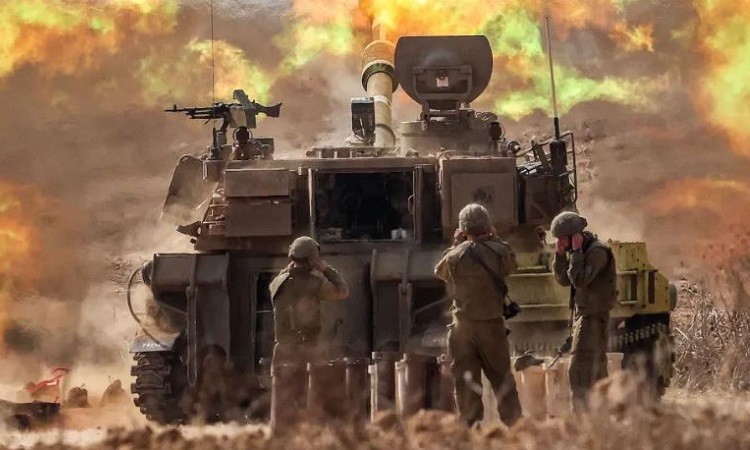
In a devastating turn of events, the recent bombing of Gaza City's Al-Ahli Arab Hospital on Tuesday night, resulting in the tragic loss of over 500 lives, has sent shockwaves around the world. This tragedy has reignited international outrage and, predictably, stirred up a fresh round of finger-pointing between the Israelis and Palestinians.
The Palestinian perspective firmly attributes the catastrophic explosion to another precision-guided bomb dropped from an Israeli Air Force aircraft. Israel, on the other hand, was swift to deflect responsibility onto Palestinian militants, asserting that a rocket misfired from Gaza was the cause.
In the immediate aftermath of the incident, the available evidence is inadequate to definitively ascribe blame. Only a meticulous examination of the hospital's debris can provide the critical fragments necessary for positive identification.
Yet even prior to this tragic episode, mounting evidence had suggested that Israeli airstrikes on Gaza had been largely indiscriminate. Despite careful scrutiny of targets, discerning a distinct military pattern in the relentless aerial assaults remains challenging, prompting the question of what motivated Israel's call for northern Gaza's evacuation last week.
From a military strategic viewpoint, there are two plausible explanations. However, for Israel, either of these possibilities could prove to be a costly miscalculation.
The first possibility involves the intent to sow chaos on Gaza's roadways to impede the movement of Hamas fighters. While this aligns with classic military thinking applied in conventional warfare, the Israeli-Palestinian conflict is far from conventional. Hamas militants do not conform to the typical military structure. Any Israeli strategy that disregards this fact cannot ensure even limited success.
During the years of Israel's blockade on Gaza, Hamas militants constructed an intricate network of tunnels beneath the territory. These tunnels were initially created to counter Israeli occupation before 2005. Initially rudimentary, they were used for smuggling goods and military supplies. Over time, they evolved into a sophisticated infrastructure, enabling the clandestine movement of troops and weapons.
Recent Hamas videos reveal tunnels of remarkable scale and craftsmanship, constructed with proper prefabricated concrete elements. These tunnels provide ample room for fighters to move swiftly and serve as secure storage for arms, including rockets.
While the exact extent and locations of these tunnels remain undisclosed, it is clear that they facilitate efficient troop and ammunition movement underground. Thus, the Israeli evacuation order for northern Gaza appears to overlook the subterranean reality.
The second potential motive behind Israel's directive is to depopulate the area of non-combatants, simplifying the offensive. In theory, this approach has merit, as an emptied area allows attackers to presume that anyone remaining is a combatant. This minimizes civilian casualties and accusations of indiscriminate harm to non-combatants.
However, in practice, it would be virtually impossible for 1.1 million people in an already densely populated territory to relocate promptly, particularly in a region besieged where essential resources like food, water, medicine, and fuel are scarce.
Even if all non-combatants were to evacuate, an Israeli ground offensive in a rubble-strewn urban landscape would be exceptionally challenging. Stalingrad comes to mind as a historical precedent, where the better-trained and technologically superior German forces struggled for months against determined Soviet defenders.
In urban settings with extensive destruction, the attacking force faces a more daunting scenario than in other terrains. The traditional 3:1 force ratio for success becomes inadequate, with a 5:1 or higher ratio being more realistic.
Paradoxically, if Gazan civilians comply with Israel's evacuation demands, they could inadvertently make it easier for Hamas fighters to operate, as they wouldn't have to worry about collateral harm to their own people. This situation could allow Hamas to engage more freely, using underground passages to evade and strike unpredictably.
Israel is unquestionably preparing for the next phase, and in the days to come, we will explore its military options, capabilities, and potential strategies.
Israel-Hamas Conflict: Day-12 Key Events Updates
Israel-Hamas Conflict: UN Chief Calls for Humanitarian Ceasefire Post Blast at Gaza Hospital
US President Joe Biden's Jordan Visit with Arab Leaders Canceled